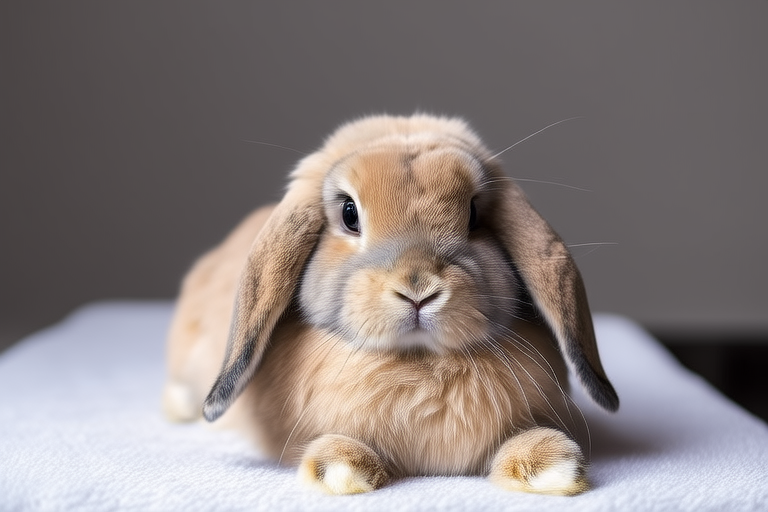Welcome to Lop Rabbit Care: A Guide for First-Time Owners
If you’re considering adopting a lop rabbit as your pet, congratulations! Lop rabbits are known for their gentle nature, affectionate demeanor, and of course, their iconic floppy ears. However, like any pet, they come with specific care requirements. This guide will help you understand what it takes to provide a happy, healthy life for your lop rabbit.
Housing Your Lop Rabbit
Choosing the right home for your lop rabbit is crucial. They need a space that allows them to move around freely while keeping them safe from drafts and predators.
- Cage Size: The cage should be large enough for your lop to stretch out fully and stand on its hind legs without touching the top. A minimum size of 4 feet by 2 feet by 2 feet is recommended.
- Bedding: Line the bottom of the cage with absorbent bedding such as paper-based products or wood shavings (avoid cedar and pine).
- Toys: Provide chew toys, tunnels, and other items to keep your lop entertained and mentally stimulated.
- Accessories: Include a litter box, food and water dishes, and a hideaway area.
Dietary Needs of Lop Rabbits
Proper nutrition is key to maintaining your lop’s health. Their diet should primarily consist of hay, fresh vegetables, and a small amount of pellets.
- Hay: Unlimited access to Timothy or orchard grass hay is essential for dental health and digestion.
- Fresh Vegetables: Offer a variety of leafy greens like romaine lettuce, parsley, and cilantro daily. Introduce new veggies gradually to avoid digestive upset.
- Pellets: Feed high-quality pellets designed for rabbits, limiting intake to about 1/8 cup per 5 pounds of body weight daily.
- Treats: Occasional treats like apples, carrots, or commercial rabbit-safe snacks are fine but should make up less than 10% of their diet.
Grooming Your Lop Rabbit
Lop rabbits have short, dense fur that requires regular grooming to prevent matting and hairballs.
- Bathing: Only bathe your lop if absolutely necessary; frequent baths can strip natural oils from its skin.
- Brushing: Brush your lop weekly with a soft-bristled brush or comb to remove loose hairs.
- Trimming Nails: Trim nails every few weeks using nail clippers designed for small animals. Be careful not to cut the quick, which contains blood vessels.
- Ear Care: Check ears regularly for signs of infection or wax buildup. Clean gently if needed using a damp cloth.
Healthcare Basics for Lop Rabbits
Regular veterinary checkups and vaccinations are important for keeping your lop healthy.
- Veterinary Care: Find a vet experienced with exotic pets, ideally one specializing in rabbits.
- Spaying/Neutering: Spaying or neutering helps prevent certain cancers and unwanted behaviors.
- Dental Health: Regularly inspect teeth for overgrowth. Provide chew toys to help wear down teeth naturally.
- Common Health Issues: Watch for signs of illness such as lethargy, loss of appetite, or changes in bathroom habits.
Exercise Needs of Lop Rabbits
Despite their compact size, lop rabbits require ample space to run and play.
- Playtime: Allow supervised play outside the cage for at least an hour each day.
- Safe Environment: Ensure the play area is free from hazards like electrical cords and toxic plants.
- Interactive Toys: Rotate toys to keep your lop engaged and mentally stimulated.
Understanding Common Behaviors
Learning about typical lop rabbit behaviors can deepen your bond with your pet.
- Gnawing: Gnawing is natural behavior for rabbits. Provide appropriate chew toys.
- Scent Marking: Spraying urine is a sign of territorial behavior. Neutering or spaying can reduce this behavior.
- Thumping: Thumping indicates alarm or excitement. Respond calmly to reassure your lop.
Bonding and Training Tips
Building trust and teaching basic commands can strengthen your relationship with your lop.
- Handling: Handle your lop gently and frequently to get them used to being touched.
- Positive Reinforcement: Use treats and praise to reward good behavior.
- Training Commands: Teach simple commands like ‘come’ or ‘sit’ using positive reinforcement techniques.
Potential Pitfalls for New Owners
Avoid these common mistakes when caring for your lop rabbit.
- Inadequate Space: Providing too small a living area can lead to stress and behavioral issues.
- Improper Diet: Feeding too many treats or inappropriate foods can cause obesity or digestive problems.
- Lack of Exercise: Insufficient physical activity can result in poor muscle tone and behavioral problems.
Resources for Further Learning
Continue educating yourself about lop rabbit care through books, online forums, and local clubs.
- Books: Look for titles specifically about rabbit care, focusing on aspects relevant to lops.
- Online Forums: Join communities where you can ask questions and share experiences with other rabbit owners.
- Local Clubs: Attend meetings of rabbit enthusiasts in your area for hands-on learning opportunities.
We hope this guide has provided you with valuable insights into lop rabbit care. Remember, every lop is unique, so take time to understand your individual pet’s needs and preferences. With proper care and attention, your lop rabbit will bring years of joy and companionship into your home.
